#dean laurentiis
Explore tagged Tumblr posts
Text
Classic Sequel Gets a Lenticularly EVIL! "Halloween II" reviewed! (Via Vision / Limited Edition Blu-ray)
“Halloween II” Limited Edition Blu-ray + 6 Photo Lobby Cards! Order here! The horrific Halloween night massacre in Haddonfield where a masked escaped mental patient named Michael Myers murdered the close friends of Laurie Strode has not yet ended. Hurt and in shock after narrowly escape Michael’s relentless pursuit, Laurie is rushed to Haddonfield Memorial Hospital to receive treatment from a…

View On WordPress
#1981#A Nightmare on Elm Street#Ana Alicia#Bad Boys#blu-ray#Charles Cyphers#Cliff Emmich#Dean Cunday#Debra Hill#Dick Warlock#Dino De Laurentiis#Donald Pleasance#Dustin McNeill#Ford Rainy#Gloria Gifford#halloween#Halloween II#Hellhole#horror#Hutner Von Leer#Irwin Yablans#Jamie Lee Curtis#Janet Leigh#Jaws: The revenge#John Carpenter#Joseph Wolf#Kill with a hammer#Lance Guest#Leo Rossi#limited edition
0 notes
Text
(I’m gonna be real honest with you, I don’t fully know if there were crushes or if I just thought these characters/people were really neat 😅)
Happy Pride y’all!!! 🖤🌚🦷💜 💙💜💗
Childhood crushes
💜♥️💜♥️
June (little Einsteins)
Daphne Blake (Scooby Doo)
Sarah (Horseland)
Abraham Lincoln (real life)
Demi Lovato (actor)
Giada De Laurentiis (Chef)
Ziva (NCIS)
Marceline ( adventure time)
Petter Pan (Once Upon A Time)
Korra (Avatar: Legends of Korra)
Tori (Victorious)
Lucy Hale (actor)
Wednesday Addams (the Addams family)
Aphmau (Minecraft Diaries)
Laurence (Minecraft Diaries)
Donna Beneviento (Resident Evil 8)
Sidney Prescott (Scream)
Billy Loomis (Scream)
Jason Dean (Heathers)
#childhood crush#pride#pride month#happy pride 🌈#lgbt pride#pride 2025#pride month 2025#queer pride#asexuality#asexual#asexual pride#biromantic
2 notes
·
View notes
Text
David Lynch, Twin Peaks Creator and Mulholland Drive Director, Dies at 78: 'There's a Big Hole in the World'
The director was a four-time Oscar nominee By Victoria Edel Published on January 16, 2025 @ 01:28PM EST

David Lynch in 1984. PHOTO: DE LAURENTIIS ENTERTAINMENT GROUP/RGR COLLECTION/ALAMY
David Lynch has died at the age of 78, his family announced on Thursday, Jan. 16.
"It is with deep regret that we, his family, announce the passing of the man and the artist, David Lynch. We would appreciate some privacy at this time," read a message on Facebook. "There’s a big hole in the world now that he’s no longer with us. But, as he would say, 'Keep your eye on the donut and not on the hole.' "
"It’s a beautiful day with golden sunshine and blue skies all the way," they added.
Lynch, who would have turned 79 this Monday, Jan. 20, was best known for creating the 1990 TV series Twin Peaks. The show spawned a 1992 feature film, Twin Peaks: Fire Walk with Me, and a 2017 revival season. A four-time Oscar nominee, he also directed films including The Elephant Man, Blue Velvet and Mulholland Drive. He was known for his distinctive style that became described as “Lynchian.”
Lynch was born in Missoula, Mont., in 1946 and grew up in Spokane, Wash., and Boise, Idaho. His father was a forest research scientist, and Lynch spent much of his childhood outside, exploring. Those same mysterious Pacific Northwest woods would eventually inspire Twin Peaks.
When he was a teenager, the family moved to Alexandria, Va. He had "a kind of happy persona” there, he told PEOPLE in 1990, but soon learned “all the thrilling things happened just after school or between classes. It added up to some sort of pitiful joke — so constricting it would drive you nuts. It inspired me to try to break rules. Behind it all, I was getting it together to be a painter.”

David Lynch in 1984. KOBAL/SHUTTERSTOCK
Lynch went to Philadelphia to study art at the Pennsylvania Academy of the Fine Arts, and there he began experimenting with film and animation. "I loved Philadelphia," he said in 1990. "The most corrupt, fear-ridden city I've ever seen. It's one of my major film influences."
In 1975, he released The Grandmother, a 35-minute blent of live-action and animation about a lonely boy whose dead grandmother comes back to life. It earned him a spot in the American Film Institute's Center for Advanced Film Studies in L.A. He spent the next five years working on his feature debut, 1977’s Eraserhead. To support himself, he held a series of odd jobs, including a paper route.
"$9.80 a night was not a thrilling rate, so I was pretty depressed," he said in 1990. "But I worked it to where I was shooting the route in one hour, almost to the second — a totally efficient hour. You learn to fold, bag and drive at the same time."
"I got an awful lot of pressure to abandon Eraserhead and do something worthwhile," he added. "I just couldn't. It was frustrating, but also beautiful." Eraserhead had a small opening, but gained interest as a midnight movie and ultimately became a cult favorite. One fan was Mel Brooks, who hired Lynch to create a film about Joseph Merrick. That movie, 1980’s The Elephant Man was a hit and garnered eight Oscar nominations, including best director and best adapted screenplay for Lynch.

David Lynch (right) directing Dean Stockwell and Francesca Annis on the set of 'Dune'. NANCY MORAN/SYGMA VIA GETTY
Next he directed an adaptation of Dune, released in 1984. It received mostly negative reviews upon it release, though it went on to be a cult favorite. “It was a heartache for me. It was a failure, and I didn’t have final cut,” he told The Hollywood Reporter in 2020. “I’ve told this story a billion times. It’s not the film I wanted to make. I like certain parts of it very much — but it was a total failure for me."
He released Blue Velvet, starring Isabella Rossellini, in 1986. The erotic thriller was criticized by some for being too violent, but he received a second Oscar nomination for best director. "When people first meet David, they expect him to be neurotic and crazy and sick, but he's not," Rossellini, who was romantically involved with Lynch at the time, told PEOPLE in 1990. “It's just that he looks at life in a different way.” He said of his creative inclinations, “I'm in love with ideas, and I'm out there trying to catch them.”
His next major film was 1990's Wild at Heart, starring Nicolas Cage and Laura Dern, who had also appeared in Blue Velvet. She told PEOPLE in 1990, “David's greatest gift is that he sees making a movie like a trip to Disneyland." Lynch described Wild at Heart as a “violent comedy, a love story in a twisted world.” He explained, “Wild at Heart goes to extremes — it's not a film for everybody. But as shocking as some things in it are, they're based on the truth of human nature, and there's a lot of humor and love wrapped up in that.”

Kyle MacLachlan (left) and David Lynch on the set of 'Blue Velvet' in 1986. EVERETT/SHUTTERSTOCK
Twin Peaks also premiered that same year. "Working at this speed is unusually intense, but I really like it," the director told PEOPLE. “It gets kind of crazy.” The mystery TV series reunited him with Dune and Blue Velvet star Kyle MacLachlan.
Set in the titular, fictional Washington town, Twin Peaks explored the mystery of who killed Laura Palmer (Sheryl Lee), though the surreal series came to mean so much more to fans. Not that Lynch was forthcoming about any of the ideas he intentionally incorporated into his work. "I never talk about themes," he said in 1990. "No way. A film should stand on its own. People talk way too much about a film up front, and that diminishes it."
MacLachlan praised Lynch as “a sound, mood and rhythm director. David hasn't forgotten the images, fears and desires you have when you're 10 or 18 or 25. They're so pure, these images, that they have a lot of impact.”

David Lynch in 1986. BONNIE SCHIFFMAN/GETTY
"I like things that go into hidden, mysterious places, places I want to explore that are very disturbing," Lynch said. "In that disturbing thing, there is sometimes tremendous poetry and truth." The combination of violence, surrealism, mysticism and blue-collar life would come to define the “Lynchian” aesthetic.
Twin Peaks aired for two seasons on ABC. It was an instant success when it premiered; PEOPLE included Laura Palmer on it annual list of most interesting people at the end of 1990. But the second season was derailed when ABC executive Bob Iger made Lynch reveal in the premiere who had killed Palmer, a mystery the director had wanted to save for the end of the series. Ratings declined, Lynch was unhappy, and the show was canceled.
In 1992, Lynch visited the story again in the prequel film Twin Peaks: Fire Walk with Me. And he returned for a third season of the series, which aired on Showtime, in 2017. “I called all the regulars — or most everyone — and I had a chat,” Lynch told Deadline in 2018 about bringing the cast back together. “These people are like family, so it was so beautiful calling them and talking to them again and getting together like for a family reunion.” He guessed that 99 percent of the surviving cast was happy to return. Dern also joined the show for the third season.
Lynch felt season three was more comparable in quality to the first than the second, which he did not like. He received nine Emmy nominations for his work on Twin Peaks.

David Lynch in 2015. GLENN HUNT/GETTY
Lynch directed four more films: 1997’s Lost Highway, 1999’s The Straight Story, 2001’s Mulholland Drive and 2006’s Inland Empire. He received his third Oscar nomination for best director (and fourth overall) for helming Mulholland Drive, which followed an aspiring actress in Los Angeles played by Naomi Watts. It was originally conceived as a TV show.
“It was a closed-ended pilot, and then the ideas came to make it into a feature,” he told Interview in 2012. “I was meditating, and all these ideas just flowed in, in one meditation — all the ideas to finish that into a feature.” In 2019, Lynch received an honorary Oscar for his contributions to film.
Lynch never gave up his early love of painting and continued to create visual art throughout his life. In 1994, he published Images, a book that featured painting, photographs and images from his films. He was also involved in several music projects, including working on the scores of several of his films.
In 2006, he published a book, Catching the Big Fish: Meditation, Consciousness, and Creativity, about transcendental meditation, and in 2018, he published Room to Dream, which was a hybrid of memoir and biography. He directed music videos for artists like Moby, Nine Inch Nails and Donovan, as well as many commercials. He also portrayed director John Ford in Steven Spielberg's 2022 film The Fabelmans.

David Lynch receiving his honorary Oscar in 2019. MICHAEL BUCKNER/VARIETY/PENSKE MEDIA VIA GETTY
Lynch was married to first wife Peggy from 1967 to 1974. They shared daughter Jennifer, who also became a director. Jennifer told PEOPLE in 1990, “He was not your normal dad, but he's been the best dad he could be, and we've had a blast.”
From 1977 to 1987, he was married to Mary Fisk. They shared son Austin. From 2006 to 2007, he was married to Mary Sweeney, with whom he shared son Riley. In 2009, he married Emily Stofle, who appeared in Inland Empire and the third season of Twin Peaks. They shared daughter Lula Boginia. Stofle filed for divorce in 2023.
Looking back on his one-of-a-kind career, Lynch was mostly content. “Well, I'm sort of proud of everything except Dune,” he said in a 2020 YouTube video. "I’ve liked so much working in different mediums. It’s not a thing about pride, it’s more like the enjoyment of the doing, enjoyment of the work."
He added, "I’ve just enjoyed working in all these different mediums, and I feel, again, really lucky to have been able to enjoy those things and be able to live."
3 notes
·
View notes
Text
After six months of shooting, six months in postproduction, and nine months of concentrated editing, Dune was ready to be unleashed onto 1,700 screens worldwide simultaneously, a rarity then. There were four gala premieres scheduled for the film: Washington, DC; Los Angeles; Miami; and London.
The DC premiere at the Kennedy Center took place on December 4 and included Dune author Frank Herbert, Kyle MacLachlan (“Paul Atreides”), Francesca Annis (“Lady Jessica”), Dean Stockwell (“Doctor Wellington Yueh”), Raffaella De Laurentiis (producer), and, of course, Dino De Laurentiis (executive producer). The latter wrangled Herbert and David Lynch (along with his wife, Mary Fisk) invites to a White House state dinner to meet President Ronald Reagan, whom Lynch admired. Supposedly the President and First Lady Nancy Reagan told Herbert they enjoyed the film, though official records show Dune wasn't screened for the president until December 22, at Camp David.
“It is an important town for an important movie,” Dino told The Washington Post. “The Kennedy Center is the most important in the United States. That is why we have the premiere of Dune here.”
MacLachlan, smiling between book signings at the premiere, told a reporter: “I don’t feel like a God Emperor, just an actor. Actually, the process of filming was boring and tedious. The fun came in seeing it in its final form. This is the second time for me, I saw it once before in New York. Yes, I do hope there’s a sequel. I’d like to be in lots more. I’d read all the Dune books years before the movie, but once I was cast in it, I began to read them voraciously.”
“I think the movie captures the book,” Herbert opined. “Of course, it leaves out scenes, but it would have to, otherwise we’d be here 14 hours.”
However, negativity around Dune was already circulating. Lynch tried to quell the bad buzz (Variety had dubbed it a “Dune-boggle”) to the Los Angeles Times shortly after this premiere, saying: “I don’t know how the rumors got started, but they aren’t based on truth … that the picture was in trouble, it wasn’t going over well and that we had a bad preview. Well, I was at the Los Angeles preview, and the feeling I got was that we had a successful preview. The feeling I got at the premiere was an awful lot better. Dune is a film built for a big screen with big sound, and they had that at the Kennedy Center.”
Lynch later admitted in Greg Olsen's Beautiful Dark: “I said that I liked the film. I convinced myself that I did. But I was a very sick person at the time. I was dying inside.”
Herbert was also banging the drum for the movie and its planned follow-up, bragging to Philadelphia Daily News: “The principals of the cast and the director, David Lynch, have all been optioned for two more films. We have enough outtakes from this one to make a four-hour TV miniseries. We’re already plotting the screenplay of the sequel.”
A copy of the script for Dune II was even seen in Herbert’s office when he was interviewed for Prevue magazine in December 1984: “That’s David’s rough draft of Dune Messiah. Now that we speak the same ‘language,’ it’s much easier for both of us to make progress, especially with the screenplays.”
Lynch elaborated even further on his plans to shoot Dune II and Dune III back-to-back in Starburst #78:
Raffaella will be the producer again, and hopefully a lot of the same team will come back. Right now, I’m writing the script for Dune II. Dune II is totally Dune Messiah, with variations on the theme. Dune III is the one that’s going to be trouble for me. I’m not wild about Children of Dune, and I want to read it again and see what kind of ideas I get. I want to get to the point where I’m really dying to do it. Dune Messiah is a very short book, and a lot of people don’t like it, but in there are some really nifty ideas. I’m real excited about that, and I think it could make a really good film. It starts 12 years later, and this creates a whole new set of problems. It’s a kind of thing unto itself. The whole place where the characters live is now different. It’s the same location, but everything has changed. And it should have a different mood … it should be 12 strange years later.
At the Royal London Charity Premiere benefiting the National Association for Mental Health on December 13 were Lynch, MacLachlan, Annis, Sting (“Feyd-Rautha”), Patrick Stewart (“Gurney Halleck”), Siân Phillips (“Gaius Helen Mohiam”), and Raffaella partying at the Empire Theatre in Leicester Square alongside special celebrity guests like Prince Andrew (Duke of York), Andy Summers and Stewart Copeland (The Police), Andrew Ridgeley and George Michael (Wham!), Gary Kemp (Spandau Ballet), Nick Rhodes (Duran Duran), Roger Taylor (Queen), Grace Jones (Conan the Destroyer), Julie Walters (Educating Rita), Danny Huston (Wonder Woman), Billy Connolly (The Hobbit), and the American artist Jean-Michel Basquiat.
There is even a photograph of Annis and Sting smiling as they cut a large (truthfully, disgusting-looking) Dune cake with a chocolate sandworm suggestively placed between fondant representations of Arrakis’ two moons.
One last premiere was held concurrently the night of the London event at the Dadeland Triple Theater in South Miami, Florida, to benefit the Coconut Grove Playhouse, where José Ferrer (“Padishah Emperor Shaddam IV”) was artistic director. Ferrer attended the public event alongside actor Brad Dourif (“Piter De Vries”), with tickets available for $20 for the film (with preshow champagne reception) or $50 for the film and a gala party with the stars. A critics’ screening and press conference with Ferrer and Dourif were also arranged, attended by John Sayles and Maggie Renzi, who had intended to screen The Brother from Another Planet in Cuba but were denied visas, so they settled for watching Dune. The reception by the press at the conference was reportedly icy.
During a London press conference in January 1985 (once writing was on the wall regarding Dune failing), Raffaella made a bold and not inaccurate prediction (via Space Voyager #14): “No, it won’t flop. It’s too original. It doesn’t look like anything that’s been on the screen before. I think it’s going to become a big cult movie.”
What follows are recollections of the cast and crew of Dune on their premiere experiences.
IAN WOOLF (Directors Guild of America [DGA] Trainee): I went to the premiere at the Kennedy Center in Washington with my wife and a friend of ours. After the two hours and 20 minutes, you could hear a pin drop in the theater. It’s like, “What the fuck was this?” It wasn’t good.
VIRGINIA MADSEN (Actor, “Princess Irulan”): I didn’t go to that one. I went to the premiere at the Chinese, or maybe it was Westwood? They handed out this little dictionary. I saw that and I thought, “Oh no, this movie is in trouble … you need a dictionary.”
ERIC SWENSON (Visual Effects, Motion Control): I don’t remember everybody being bummed or super excited. It was like, “Hey, that’s pretty cool.” Everybody hates their own stuff, and thinks they could do it better. I’m looking at Rambaldi’s creatures and the forced perspective miniatures. Some of those sets, like the Emperor’s palace, were still left over when I got there, and to see them up on the big screen was phenomenal.
ALICIA WITT (Actor, “Alia”): I loved it! I loved it. I also missed a lot of the scenes that were missing. It was amazing to have that first experience of having watched something being filmed and then seeing it made into a real-life movie. That’s always magical, and it never stops being magical. No matter how many times I’ve done it now, you watch a scene being filmed over and over again from all the different angles and then you see it turned into a story. I also remember being confused by the feedback that I heard after the movie that people didn’t understand it, because obviously I knew the story backward and forward and it made perfect sense to me, but I can see now how it might have been confusing to people who hadn’t already read the book.
VIRGINIA MADSEN (Actor, “Princess Irulan”): It was kind of hard for me to recover from the fact that my face was 25 feet tall in the theater. That was the coolest thing I could have ever dreamt of as a little girl. There it was. I might not have been Barbara Stanwyck, but there I was. To me, everything about the movie was perfect because I was so proud to be a part of something that big when I was such a sci-fi/fantasy/horror fan. It was very exciting and very beautiful. I wanted to see it again immediately. [Laughs.]
PENELOPE SHAW SYLVESTER (Assistant Editor): They were all very complimentary at the Royal premiere in London. We all went out and partied afterward. I remember going into the ladies’ room, and Sting’s wife’s dress had come apart and she was in a panic. I said, “Don’t worry!” Being a Girl Scout, I had my safety pins; we pinned her up and back she went.
SEAN YOUNG (Actor, “Chani”): I was never at a screening when that movie came out because I was in Africa doing a movie called Baby: Secret of the Lost Legend. It was a long shoot. I never even saw the picture at all until 18 years later when I watched Dune on TV one day. I didn’t have a whole lot of thought about it, but I do remember the reshoot scene at the end that we shot day for night. I thought that was pretty good.
Young harbors no ill will toward the filmmakers for reducing her role of Chani almost to the point of haiku.
SEAN YOUNG (Actor, “Chani”): This is going to sound ridiculous, but I couldn’t have cared less. It didn’t matter to me. That’s show business. That’s what I mean about practicality. When you take stuff personally in show business, it makes life harder. How many people put their money in to make this movie? They paid you, right? They don’t owe you a storyline unless you put it in your contract: “I must have a storyline that takes up a half-hour of this picture at least.” Nobody will do that. If I could do one thing differently, it would be nice to appear in one of the gowns. Francesca got to wear nice gowns and she was also in the stillsuit, so she had both. Chani only had the stillsuit. That was it. Well, I had a little ropey see-through thing for the love scenes. It would have been nice to have a spiffed-up My Fair Lady moment. [Laughs.]
Molly Wryn did not discover that her major character of Harah—along with her entire storyline—had been almost completely excised from the finished film until she attended the premiere in Los Angeles.
MOLLY WRYN (Actor, “Harah”): Imagine? My heart crushed. Broke. It hurt. David had said to me not long before that, “You know, some of your stuff has been cut.” Something very gentle. I said, “Okay.” But I had no idea I was completely cut. They even shot me for the credits, when they show everybody’s face, but didn’t use it, which was sad. I remember how shocked I was. And then at the end, not even my face that they filmed. It took a while, they film from all directions and then pick out what they want to use and … gosh, I’m getting teary about it.
Harlan Ellison wrote articles at the time alleging that Frank Price of Universal thought Dune was “a dog” and was deliberately withholding it from the press.
FRANK PRICE (President of Universal Pictures, 1983–86): Not a dog. It was not bad. David Lynch does good work. Harlan Ellison was always around with a chip on his shoulder.
PAUL M. SAMMON (Universal Pictures Publicity Executive): Prior to its release, there was a great deal of journalistic interest in Dune. Fan interest was somewhat split prior to the film’s opening, though. There was the inevitable skepticism of, “Isn’t this the same producer who gave us that mediocre remake of King Kong?” That was balanced by Frank Herbert’s very vocal enthusiasm about how faithfully David Lynch was “doing” his book. In fact, I included some footage of Frank heartily (and genuinely) endorsing Dune in my “Destination Dune” convention featurette, but then the release date kept being pushed back and audience/press interest began waning. CRAIG CAMPOBASSO (Production Office Assistant): They didn’t do any press screenings. That’s where all that anger came from the press. People started writing bad stuff because of that.
FRANK PRICE (President of Universal Pictures, 1983–86): Oh yeah. You don’t want to give critics time to destroy you. I had a picture at Columbia that is a good example, called Neighbors. It had John Belushi and Dan Aykroyd. When we test-screened it, audiences hated it. I told the marketing head, “Get every theater you can get, every seat, because we’ve got to get everything out in a week.” We did great business for a week, and then it collapsed. Word of mouth destroyed it. But with Dune, you can’t get your money back in a week.
CRAIG CAMPOBASSO (Production Office Assistant): They didn’t want anybody to knock it down before it was released, but not letting them see it had the opposite effect. Then the movie came out, and it just didn’t do well.
THOM MOUNT (President of Universal Pictures, 1976–83): The real problem was people didn’t show up. It’s hard to know. When we did The Deer Hunter, I was told by everybody repeatedly that the picture would be a total failure, that no one wants to see this long exegesis on our painful exit from Vietnam. Six Academy Awards and hundreds of millions of dollars in income later, they were wrong. But on the other hand, you’re talking to the guy who gave Xanadu the go-ahead. I know what it is to lose every dime.
Despite the wild reactions, much of the cast and crew weren’t blaming Lynch.
FREDERICK ELMES (Additional Unit Cinematographer): What’s on the screen isn’t really David’s film. It’s a different edit. It’s a different version of the film, and that made me very sad.
TERRI HARDIN (Stillsuit Fabrication, Stunt Double): People would say, “Oh, that movie was so terrible.” What you don’t realize is there’s like seven hours on the cutting room floor. Frank Herbert at the screening was devastated, so sad that he had to show us this movie. I think he had seen it before, but he was heartbroken by the movie. So many people were disappointed by the results. The De Laurentiises weren’t at our screening, mostly the builders and below-the-line people. It was supposed to be two films, and it became one, really short and really not very comprehensible.
KENNETH GEORGE GODWIN (Production Documentarian): I knew there was stuff that would have made a stronger film. You’re 45 minutes into it before the Harkonnens attack, and mostly what we’ve got is just setting up all these royal families. You’ve got this huge exposition at the beginning, then a pretty rushed midsection. After he’s with the Fremen, they start to follow him and attack … That’s all compressed into a couple of montages. There was way more shot. Then you’ve got the ending, a big battle scene. A huge chunk of the meat of the story got ditched.
GILES MASTERS (Art Department): The stories of what David went through are well-documented, and it wasn’t the film that he wanted. It wasn’t the film most of us expected to see when we went to the premiere. Everybody was a little like, “Oh, what happened?”
LUIGI ROCCHETTI (Makeup Artist): In addition to the human side of Lynch, I admire his vision of things. The film could have been better. It’s a very complicated and difficult story to tell, and surely David’s version was better when it was uncut.
KENNETH GEORGE GODWIN (Production Documentarian): If David had been left alone with the editor, it would have been better, had more coherence. The emphasis was never so much on the story as on creating four different worlds with all their architecture, the sense that these places all have different histories, different societies. That kind of world-building appealed to him more than the story of this kid who becomes a god.
JANE JENKINS (Casting Director): I don’t know that I ever understood it any better than when I struggled through the book. I think that the movie was not as successful as David could have made it. He had a vision to do it in black and white. He didn’t want to do it in color. I think that it had the potential if David had been left entirely to his own devices to make it a stronger movie. There was a lot of interference in his version, but [he] was not a powerful enough director at that point in his career to say, “All right, everybody back off,” and have final cut. Even though I found Eraserhead very odd, to say the least, all his films have been very interesting. Dune is probably the least successful [of his films] because he didn’t have enough control to do what he wanted.
RAFFAELLA DE LAURENTIIS (Producer): Look, it’s not an easy adaptation. If you have not read the book and you’re not familiar with the book, you’ll get lost easily. One of the mistakes—and I’ll take responsibility for that—was David would have probably been a lot more esoteric, but I was concerned about people being able to follow the story. Sometimes I was pushing to explain things, to remain close to the book, to be faithful to the book. I’m not sure that was always the right decision to make.
Excerpt adapted from A Masterpiece in Disarray: David Lynch’s Dune—An Oral History by Max Evry. Published by arrangement with 1984 Publishing LLC. Copyright © 2023 Max Evry.
14 notes
·
View notes
Text

#ProyeccionDeVida
🎬 “TERCIOPELO AZUL” [Blue Velvet] 😘🎙️👩💋
🔎 Género: Intriga / Cine negro / Drama / Neo-Noir / Thriller Psicológico / Película de Culto / Cine Independiente USA

⌛️ Duración: 120 minutos
✍️ Guión: David Lynch

🎼 Música: Angelo Badalamenti
📷 Fotografía: Frederick Elmes

🗯 Argumento: Una mañana, Jeffrey Beaumont, después de visitar a su padre en el hospital, encuentra entre unos arbustos una oreja humana. La guarda en una bolsa de papel y la lleva a la comisaría de policía, donde le atiende el detective Williams, que es vecino suyo. Así, comienza una misteriosa intriga que desvela extraños sucesos acontecidos en una pequeña localidad de Carolina del Norte.

👥 Reparto: Isabella Rossellini (Dorothy Vallens), Kyle MacLachlan (Jeffrey Beaumont), Dennis Hopper (Frank Booth), Laura Dern (Sandy Williams), Dean Stockwell (Ben), Angelo Badalamenti (Pianista) y Michelle Sasser.

📢 Dirección: David Lynch
© Productora: De Laurentiis Entertainment Group (DEG)

🌎 País: Estados Unidos
📅 Año: 1986

📽 Proyección:
📆 Martes 24 de Junio
🕗 8:00pm.
🎦 Cine Caleta (calle Aurelio de Souza 225 - Barranco)
🚶♀️🚶♂️ Ingreso libre

🙂 A tener en cuenta: Prohibido el ingreso de bebidas y comidas. 🌳💚🌻🌛
0 notes
Text
@shadowbrn LIKED for a starter : dean heyward de laurentiis

for some, it was a little easier in high school to transition to hockey. some schools had their own team and the boys that played were already apart of a club league. yet even then, the club leagues always had the same members.. even if you weren’t on the same team, you were familiar with each other. everyone knew everyone, yet with college it was a DIFFERENT experience. in some cases, the freshman didn’t know anyone, not even each other. the upperclassmen had to learn to work with a new group of guys and it was a learning curve. this was the reason jensen decided to start camp early every year.

standing on the ice, dotting their briar practice jerseys, listening as they were being paired off, john felt a slight sense of panic as they moved onto the defensemen, giving them partners for these exercises to see how they’d pair up — IF IT WOULD BE PERMANENT. shifting on his skates, he eyes, dean, the other boy that he was paired up with. skating over to him, logan gives him a slight smile. 〝 hey, i’m john. 〞
1 note
·
View note
Text
#book review#booksbooksandmorebooks#booklr#book quotes#books#off campus elle kennedy#elle kennedy#garrett graham#hannah wells#garrett x hannah#gigi graham#the deal#off campus series#briar university#john logan#john tucker#dean laurentiis#allie hayes#bookaddict#book edit
24 notes
·
View notes
Photo

Blue Velvet - David Lynch ( (1986)
Poster design by Farkira.
https://deadlypreygallery.com
#blue velvet#david lynch#farkira#1986#180s#usa#ghanamusic#dino de laurentiis#poster#poster design#deadly prey gallery#lovers video club teshie#neo noir#kyle mclachlan#isabella rossellini#dennis hopper#laura dern#dean stockwell#jack nance#brad dourif
9 notes
·
View notes
Text
DUNE (1984) Review - **
DUNE (1984) Review – **
Stranger, maybe, but hardly richer. After seeing Denis Villeneuve’s impressive new version, and after a long day at work, I figured I’d end my week by kicking back with a beer and revisiting David Lynch’s infamous attempt at tackling the book. Critically savaged on its initial release (with a very few defenders), Lynch’s Dune has since developed quite a solid cult, with key lines and images…

View On WordPress
#80s films#Brad Dourif#Carlo Rambaldi#David Lynch#Dean Stockwell#Dino de Laurentiis#Dune#Film Reviews#Francesca Annis#Frank Herbert#Jürgen Prochnow#José Ferrer#Kenneth MacMillan#Kyle MacLachlan#Patrick Stewart#Paul L. Smith#science fiction#Sean Young#Siân Phillips#Sting#Toto#Virginia Madsen
4 notes
·
View notes
Link
#maximum overdrive#brivido#stephen king#horror#comedy#sci-fi#film#movie#ac/dc#action#bill robinson#bubba hendershot#dean gates#dino de laurentiis#dixie boys#ellen mcelduff#emilio estevez#j c quinn#pat hingle#trash#wanda june#who made who#review#recensione#italian#italiano#mymadreams
1 note
·
View note
Text
Dune 1984 - Ultimate Edition
Dune 1984 – Ultimate Edition

View On WordPress
#4K#Alejandro Jodorowsky#Bill Sienkiewicz#Brad Dourif#Brian Eno#David Lynch#Dean Stockwell#Dino De Laurentiis#Drama#Epos#Everett McGill#Fantasy#Francesca Annis#Frank Herbert#Freddie Francis#Freddie Jones#Heimkino#HR Giger#José Ferrer#Jürgen Prochnow#Kenneth McMillan#Kyle MacLachlan#Linda Hunt#Max von Sydow#Patrick Stewart#Paul L. Smith#Paul Poet#Raffaella De Laurentiis#Ralph Macchio#Restaurierung
0 notes
Photo

Maximum Overdrive will be released on Steelbook Blu-ray on May 30 via Lionsgate. The 1986 sci-fi horror film is available to pre-order for $19.96 exclusively at Walmart.
Stephen King makes his lone directorial effort on the cult classic. He also wrote the script, based on his own 1973 short story, “Trucks.” Emilio Estevez, Pat Hingle, Laura Harrington, and Christopher Murney star. AC/DC perform the soundtrack.
Beyond the packaging, the disc will be identical to the Vestron Video Collector’s Series edition form 2018. Special features are listed below, where you can also see the Steelbook interior.

Special features:
Audio commentary with Tony Magistrale, author of Hollywood’s Stephen King
Audio commentary by actor/comedian Jonah Ray and Blumhouse producer Ryan Turek
Interview with producer Martha De Laurentiis
Interview with actress Laura Harrington
Interviews with actor John Short and actress Yeardley Smith
Interview with make-up effects creator Dean Gates
Interview with actor Holter Graham
Interview with Murray Engleheart, co-author of AC/DC: Maximum Rock & Roll
The Wilmington Factor – A look back at the filming of Maximum Overdrive with members of the production crew in North Carolina
“Goblin Resurrectus” – Restoration of the Happy Toyz Golbin
Behind-the-scenes footage
Still gallery
Theatrical trailer
TV spots
Get ready for the ultimate battle of man vs. bloodthirsty machine in this terrifying Stephen King classic! For three horrifying days, the Earth passes through the tail of a mysterious comet. The skies glow an eerie green as humanity waits to see what the fallout will be. But what they imagine is nothing like the nightmare they find — the comet’s magnetic fields cause all the machines on Earth to suddenly come to life and terrorize their human creators in a horrific killing spree. Now, it’s up to a small group of people trapped in a desolate truck stop to defeat the killer machines — or be killed by them!
#maximum overdrive#stephen king#horror#80s horror#1980s horror#steelbook#dvd#gift#vestron video#emilio estevez#pat hingle#acdc#80s movies#1980s movies#stephen king movies
19 notes
·
View notes
Text
Ranking : David Lynch (1946-present)
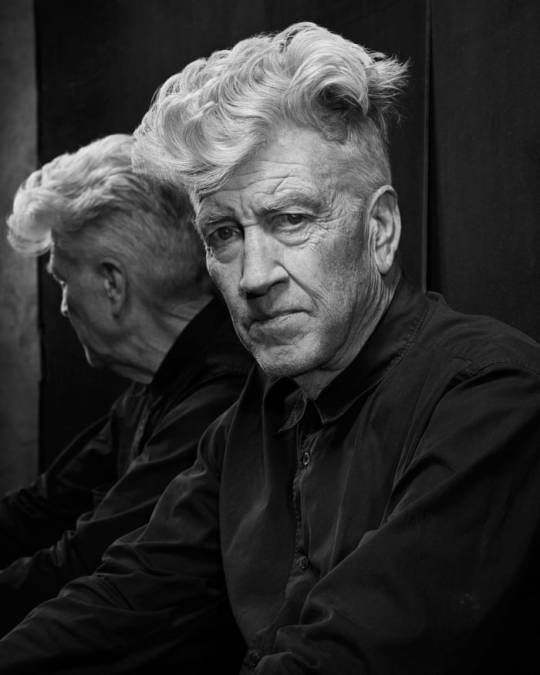
Film is definitely an art, and yet, it seems to be distinct from other forms of visual art such as painting or sculpture. Perhaps that is what makes David Lynch such a fascinating director, as he has the ability to tap into the surreal stimulus often found in the most famous paintings and transform it into brain-bending moments on film. Whether it his fear-fueled fascination with fatherhood present in his debut film Eraserhead, his ruminations on Hollywood society present in Inland Empire, or any of the stopping points in-between, it’s safe to say that David Lynch sits in the rarified air of directors like Ingmar Bergman, Alejandro Jodorowsky and the other few who can turn film into something deeper, more visceral and more meaningful.
With one of the most unique collections of films credited to his name, including a couple of curveballs in the early portion of his career, ranking the films of David Lynch is as perplexing as it is entertaining... so, without further ado, we attempt to climb that hill. I’m not even going to pretend that I can break down all of the symbolism and meanings of these films, but I can give my honest opinion about them.
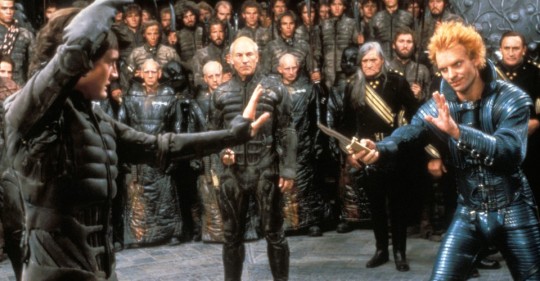
10. Dune (1984) For a film that is supposed to be such a science-fiction gem, it’s a bit funny that nobody can seem to make a coherent, entertaining version of Dune. After nearly 15 years in pre-production hell (and three iconic names attached to versions of the production), the film landed in the laps of Dino De Laurentiis and Ridley Scott, but after another extended period delaying production, Scott bowed out, leaving the door open for David Lynch to step in. For what it’s worth, he did bring a huge list of names to the project, but the fact that the directing credit for Dune belongs to the throwaway pseudonym Alan Smithee should clue in any perceptive viewer that the project may not be one that Lynch cares to stand behind.
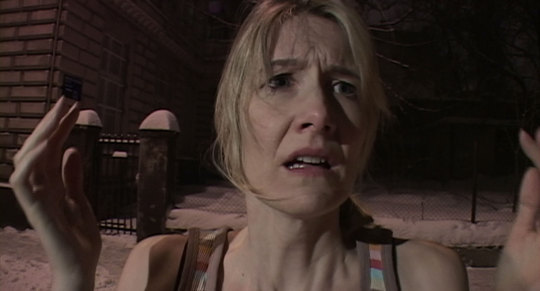
9. Inland Empire (2006) David Lynch isn’t the type of director that revisit ground he’s already covered, which is what makes Inland Empire (the seemingly final film from Lynch) such a confusing choice. Had this film not been released after a five year gap between it and the stellar Mullholland Drive, another film that focuses on the dark underbelly of Hollywood, fame and the tolls of the acting craft, perhaps it would hit a little different to me. That’s not to say that the film isn’t good, as it is definitely a slight adjustment from the style that Lynch basically trademarked, but when a director like Lynch experiments on what feels like general principle, it makes experiments that feel like a step backward lose impact.

8. Lost Highway (1997) Technically, you could count all of the Lynch “mystery” films as noir in some capacity, but Lost Highway feels like a direct skewing of what we know as the traditional noir structure. At its core, the film is a simple murder mystery, but it doesn’t take long for the Lynch signatures to begin appearing in every form from a mysterious, unnamed character to our protagonist literally changing into another person with no base explanation provided. Perhaps the latter choice was a look into split personalities and the disassociated nature that can come with brutal crimes... as I said before, I’m not here to try and decode the David Lynch mystery. While Lost Highway serves as a good entry point into the David Lynch catalog, it sits on the back half of the rankings due to no fault of its own... it’s more of a situation where the other mysteries are so stellar, that even the strange seems simplistic by comparison.
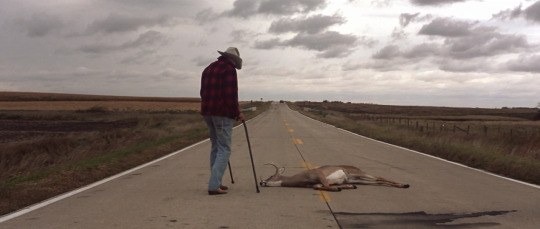
7. The Straight Story (1999) If you played a game of “one of these things is not like the other” with the films of David Lynch, it would not be difficult to make a winning choice, as The Straight Story is clearly the most accessible and standard of all the Lynch fare. What the film lacks in oddness and style, however, is more than made up for in terms of heart and performance. The use of a lawnmower as the main source of travel allows for some beautiful landscape cinematography, and the sheer force of will exhibited by Richard Farnsworth pays off in spades when he is reunited with Harry Dean Stanton. If you’re looking for something creepy, eclectic and mind-warping from Lynch, there are plenty of other films to choose from, but if you are looking for an excuse to shed a tear or two, this is the film for you.
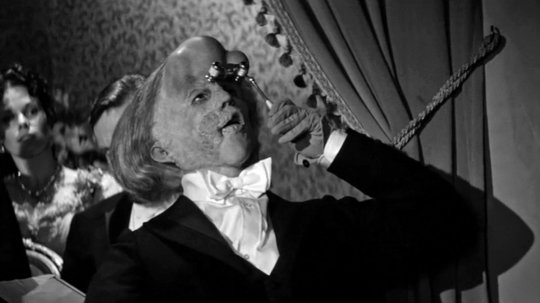
6. The Elephant Man (1980) It’s funny to think that if not for The Straight Story, the Joseph Merrick biopic The Elephant Man would serve as the most normal film of the Lynch canon. This sophomore film dialed back on the abstractions present in Eraserhead, but it brought some extraordinary makeup and costuming to the table, not to mention it gifted viewers with a powerfully moving performance from John Hurt. Though memorable in its own right, the film really made its mark by tying Raging Bull at the 53rd Academy Awards, garnering eight nominations (and sadly losing in all categories, going home empty-handed). The backlash for the Academy’s lack of giving The Elephant Man special praise for its makeup effects also led to the creation of a Best Makeup award for the Oscars. It is quite possible that the combination of shock from Eraserhead in tandem with the skill and prowess shown in The Elephant Man opened all of the creative control doors for David Lynch, as not even Dune could derail his career and artistic oddness.

5. Blue Velvet (1986) While Twin Peaks is where I first heard the name David Lynch, it was Blue Velvet where I first got a taste of why Lynch was held in such high regard. The suburban paradise presented in the opening credits is immediately shattered by the discovery of a random ear, and the weirdness rabbit-hole gets deeper and deeper from that point on. The classic look of the film stands in powerfully beautiful contrast to the extreme darkness of the narrative, and Dennis Hopper turned it all the way up to 11 for his performance in the film. If Lost Highway serves as the best introductory film for those curious about Lynch, then Blue Velvet serves as a good midpoint to determine how much weirdness, abrasiveness and shock you can handle in a Lynch film.

4. Mulholland Drive (2001) I really and truly do not know where to begin with this insane rollercoaster ride of a film. The first time I watched this film, I thought I had everything figured out, every mystery solved and every bait and switch identified, but upon repeat viewings of Mullholland Drive, I’ve determined that I either had a brief moment of harmonic brilliance or I was fooling myself. The film makes sense at its root, if really and truly dissected, but when taken at face value and in real time, it’s almost impossible not to get completely lost in the sheer immersive nature of everything thrown at you. Naomi Watts is brilliant as the viewer guide through the film, and it’s good that she is so powerful in her lead role and guiding task, because Mullholland Drive is not afraid to get downright bonkers on more than one occasion. While films about the trappings of Hollywood and stardom are nothing new, I’m hard pressed to think of another film that approaches these in a manner even remotely close to that of Mullholland Drive.

3. Wild at Heart (1990) Quite possibly the most enjoyable of all the David Lynch films, despite some downright brutal moments of celebratory violence sprinkled throughout. The combination of Nicolas Cage and Laura Dern is nothing short of electric, and the presence of Willem Dafoe as antagonist is the perfect spark to ignite an already volatile mixture of leads. The energy level of this film starts on ten and only continues to rise as the film progresses. If/when I ever get the chance to program theater showings, I am putting this film on a double bill with Natural Born Killers immediately. While I can’t say that Wild at Heart is my favorite David Lynch film, I can say without a shadow of a doubt that it’s my favorite Lynch film to gush about with other fans.
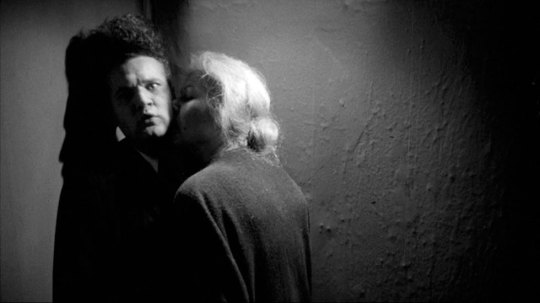
2. Eraserhead (1977) More often than not, directors the caliber of David Lynch have stunning debut films to their name, and Lynch certainly exploded onto the scene with a gamebreaker in the form of Eraserhead. Upon first viewing, there is enough “WTF?!” going on to confuse most people, but for those brave enough to watch the film more than once, it becomes painfully obvious that all of the madness and shocking imagery on display is a clear metaphor for Lynch’s fear of fatherhood. The simple act of taking a fear that resonates with most humans and turning it into the equivalent of a black and white bad drug trip works perfectly, and Jack Nance’s iconic look and performance are almost recognizable enough to know without knowledge of the film. Eraserhead is one of those films that leaves you different than you were prior to watching it.
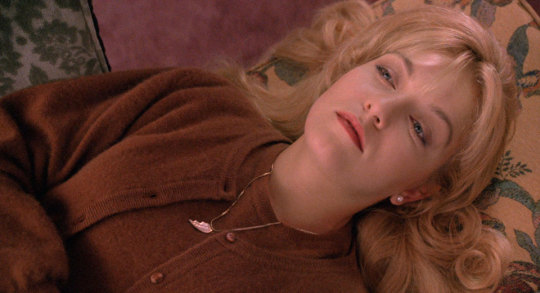
1. Twin Peaks : Fire Walk with Me (1992) In all honesty, was there every any doubt that Twin Peaks : Fire Walk with Me wouldn’t be in the top spot? Of all the properties that the David Lynch name is connected to, none of them have even come remotely close to touching the sheer size of the lore and fandom that has emerged from this modern day masterpiece. The story of the high school princess with deep, dark secrets to hide is not new territory, but the way that Lynch handles it all with Twin Peaks takes the familiar to all new realms of weirdness, including the creation of iconic places and characters like the Black Lodge, the Log Lady, the production mistake that created the infamous Bob, and the eternally iconic Laura Palmer, and oh yeah, the film’s not half bad either. I doubt that David Lynch ever had any intention of reaching the heights of fame that Twin Peaks : Fire Walk with Me afforded him, but it would be dumb to think that he isn’t impressed with the magnitude of the world he created based on that single idea for a film.
#ChiefDoomsday#DOOMonFILM#DavidLynch#Eraserhead#TheElephantMan#Dune#BlueVelvet#WildAtHeart#TwinPeaksFireWalkWithMe#LostHighway#TheStraightStory#MullhollandDrive#InlandEmpire
25 notes
·
View notes
Text

#ProyeccionDeVida
🎬 “TERCIOPELO AZUL” [Blue Velvet]
🔎 Género: Intriga / Cine negro / Drama / Neo-Noir / Thriller Psicológico / Película de Culto / Cine independiente USA
⌛️ Duración: 120 minutos

✍️ Guión: David Lynch
🎼 Música: Angelo Badalamenti
📷 Fotografía: Frederick Elmes

🗯 Argumento: Una mañana, Jeffrey Beaumont, después de visitar a su padre en el hospital, encuentra entre unos arbustos una oreja humana. La guarda en una bolsa de papel y la lleva a la comisaría de policía, donde le atiende el detective Williams, que es vecino suyo. Así, comienza una misteriosa intriga que desvela extraños sucesos acontecidos en una pequeña localidad de Carolina del Norte.
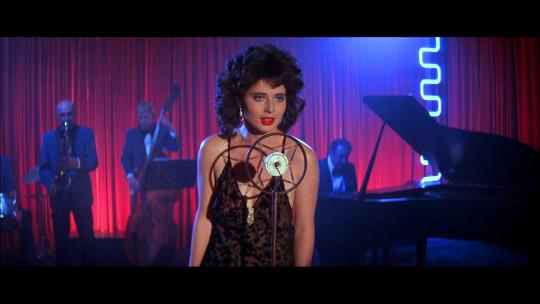
👥 Reparto: Isabella Rossellini (Dorothy Vallens), Kyle MacLachlan (Jeffrey Beaumont), Dennis Hopper (Frank Booth), Laura Dern (Sandy Williams), Dean Stockwell (Ben), Angelo Badalamenti (Pianista) y Michelle Sasser.
📢 Dirección: David Lynch
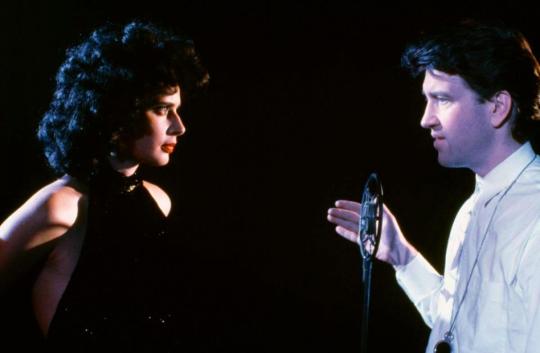
© Productora: De Laurentiis Entertainment Group (DEG)
🌎 País: Estados Unidos
📅 Año: 1986

📽 Proyección:
📆 Viernes 24 de Enero
🕗 8:00pm.
🎦 Cine Caleta (calle Aurelio de Souza 225 - Barranco)
🚶♀️🚶♂️ Ingreso libre

🙂 A tener en cuenta: Prohibido el ingreso de bebidas y comidas. 🌳💚🌻🌛
1 note
·
View note
Note
📱💕 🌡📖🐷🌼
📱 Show your phone lock screen and/or home screen- my lock screen is a picture i took on an airplane last year (before covid). i’ll try to post it at some point and show you.
💕 Your two top fave fictional characters- Dean Hayward de Laurentiis and Garrett Graham own my damn heart!! actually every boy in Elle Kennedy’s Off Campus series owns my heart.
🌡 Fave season- spring or summer
📖 Fave book- this is such a hard one! but it would have to be The Murder House by James Patterson
🐷 Junk food you can never get enough of- i don’t really eat junk food... but if i had to pick it would for sure be ice cream. does ice cream count?
🌼 Fave flower- ooo gerber daisies for sure
2 notes
·
View notes